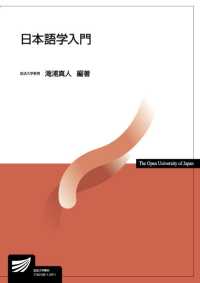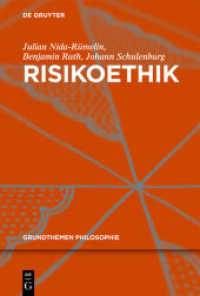- ホーム
- > 洋書
- > 英文書
- > Computer / Languages
Full Description
In the more than seven years since the Object Management Group (OMG) adopted the Unified Modeling Language (UML), UML has established itself as the de facto industry standard for modeling software systemsIn 2001 OMG put together a task force to revise UML Version 1.0. In March of 2003, UML Version 2.0 was finalized and rolled out to the 35 major companies participating in the adoption effort and made available to the public. This book provides a step-by-step guide to the notation and use of UML, one of the most widely used, object-oriented notation systems/programming languages in existence. The outline demonstrates the use of the techniques and notation of UML through case studies in systems analysis, showing the student clearly how UML is used in all kinds of practical situations. This revised edition will discuss the new infrastructure of the latest UML Version 2.0, and will include new examples, review questions, and notations.
Contents
Chapter 1: Basic Concepts Chapter 2: Mathematical Concepts in Chemistry Chapter 3: Atoms and Atomic Masses Chapter 4: Electronic Configuration of the Atom Chapter 5: Chemical Bonding Chapter 6: Inorganic Nomenclature Chapter 7: Formula Calculations Chapter 8: Chemical Equations Chapter 9: Net Ionic Equations Chapter 10: Stoichiometry Chapter 11: Molarity Chapter 12: Gases Chapter 13: Kinetic Molecular Theory Chapter 14: Oxidation and Reduction Chapter 15: Solutions Chapter 16: Equilibrium Chapter 17: Acid-Base Theory Chapter 18: Organic Chemistry Chapter 19: Nuclear Reactions Appendix: Scientific Calculations, Glossary, Index, Table of the Elements, Conversions, Periodic Table








